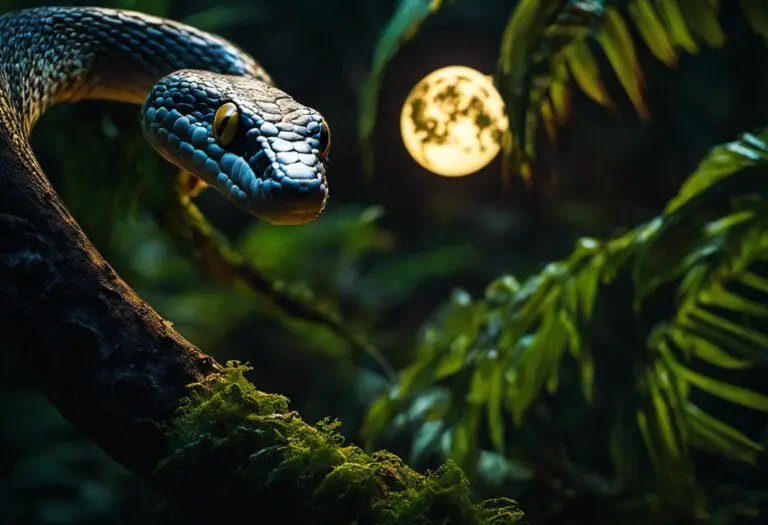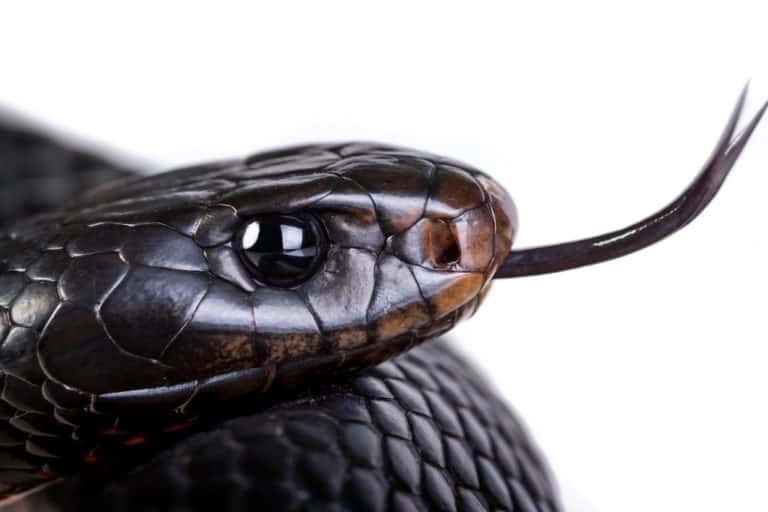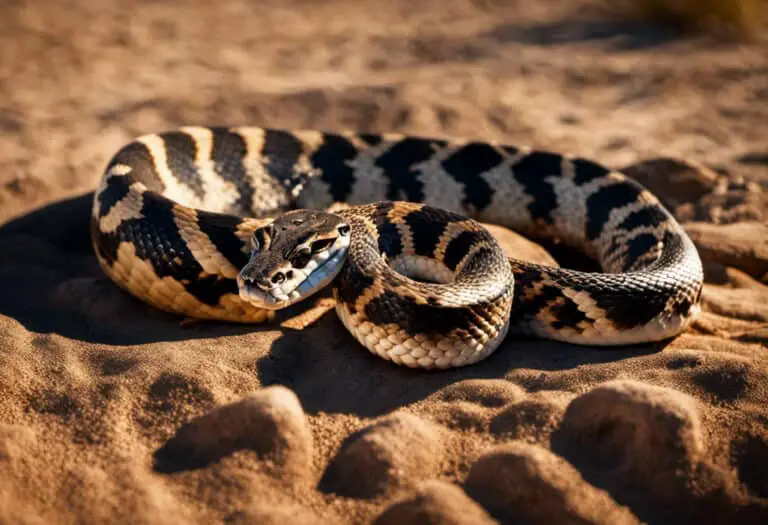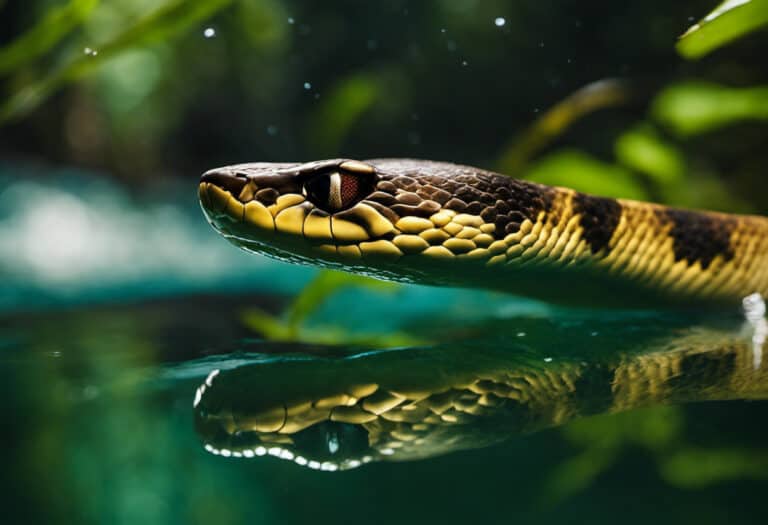Do All Snakes Have Scales? Unraveling the Mystery
Snakes have long been a subject of fascination for scientists and reptile enthusiasts. One of the distinguishing features of snakes is their scales, which play a critical role in their movement, protection, and survival. However, there have been recent discoveries of scaleless snakes that have sparked curiosity and further investigation into this unique trait.
Scalelessness in snakes is a genetic mutation, not a deformity, that affects the development of their skin. Although it is rare, many different snake species have been found to exhibit this trait in the wild as well as in captivity. Some examples include the scaleless corn snake, Texas ratsnake, gopher snake, and ball python.
- Scalelessness in snakes is a genetic mutation, not a deformity.
- Many different snake species have been found to exhibit this unique trait.
- Scaleless snakes are still able to move, shed their skin, and thrive like their scaled counterparts.
- Scalelessness allows for more vibrant and clear colors and patterns on the snake’s skin, making them visually striking.
- It is important to handle scaleless snakes with care, as they may be more vulnerable to injury.
Scaleless Snakes: A Genetic Mutation
Scaleless snakes are not just a deformity, but rather a genetic mutation. The absence of scales is the result of a recessive mutation that affects the genes responsible for scale formation. The mutation causes a reduction in the production of keratin, the protein that forms the scales, resulting in areas of skin without scales. The scaleless trait is a fascinating topic of study for scientists who want to understand how genetic mutations impact physical characteristics and behaviors.
While all snakes have scales, the scales on a scaleless snake are limited to the belly, where scales are larger and more durable than those found elsewhere on the body. The scales on the belly are essential for protecting the internal organs and for gripping surfaces during movement. The lack of scales on other areas of the body gives scaleless snakes a unique appearance and texture that sets them apart from scaled snakes.
Scaleless snakes are found in many snake species, including the popular scaleless corn snake, Texas ratsnake, gopher snake, garter snake, and ball python. The mutation is recessive, meaning that two copies of the gene are required for a snake to be scaleless. Scaleless snakes can produce scaled offspring if they mate with a scaled snake that carries the gene for the scaleless trait.
When it comes to shedding their skin, scaleless snakes do not differ significantly from scaled snakes. Like other snakes, they shed their skin in a tubular piece that they push out of their mouth. While their skin lacks the rough texture of scales, it is still flexible and allows for a full range of motion. The skin of a scaleless snake feels smooth and slippery, like a latex balloon or a marshmallow, due to the lack of scales.
Despite not having scales, scaleless snakes do not have a higher risk of dehydration. They actually lose skin moisture at rates equal to or less than scaled snakes. The absence of transparent scales also allows for more vibrant colors and patterns to show through in the skin, making some scaleless snakes even more visually appealing than their scaled counterparts.
There is some debate about whether scaleless snakes are more vulnerable to injury than scaled snakes, but evidence from wild-caught scaleless snakes does not support this claim. The scales on a snake serve various functions, including reducing friction during movement, aiding in grip and locomotion, and allowing retention of moisture. The unique adaptations of snake scales have allowed for the evolution of different snake species in diverse environments.
Overall, scaleless snakes are a fascinating genetic mutation that provide a unique opportunity to study the impact of genetic mutations on the characteristics and behaviors of snakes. The beauty and vulnerability of scaleless snakes continue to capture the attention of scientists and reptile enthusiasts alike.
Species of Scaleless Snakes
Many different species of snakes have been found to exhibit scalelessness, including the popular scaleless corn snake, Texas ratsnake, gopher snake, garter snake, and ball python. Each species has their own unique characteristics and traits.
The scaleless corn snake, for example, is visually striking with its bright colors of red, black, and white. The Texas ratsnake, also known as the black ratsnake, has a dark and glossy appearance with a pattern of white spots. The gopher snake, found in North America, has a distinctive head and a bold pattern of brown and black. The garter snake, known for their harmless and docile nature, can come in a variety of colors and patterns. Lastly, the ball python, a popular pet snake, can also exhibit the scaleless trait.
Overall, the variety of snake species that exhibit scalelessness highlights the unique and diverse nature of these reptiles.
Shedding and Skin Characteristics of Scaleless Snakes
Despite their lack of scales, scaleless snakes still shed their skin just like their scaled counterparts. The process of shedding, also known as ecdysis, is important for the growth and health of the snake. During shedding, the old skin is pushed off and discarded, revealing a fresh new layer beneath.
Scaleless snakes shed their skin in a single tubular piece, just like other snakes. However, their lack of scales results in a unique texture of their skin. Without the usual layer of transparent scales, the skin of scaleless snakes is smooth and has a latex balloon-like texture.
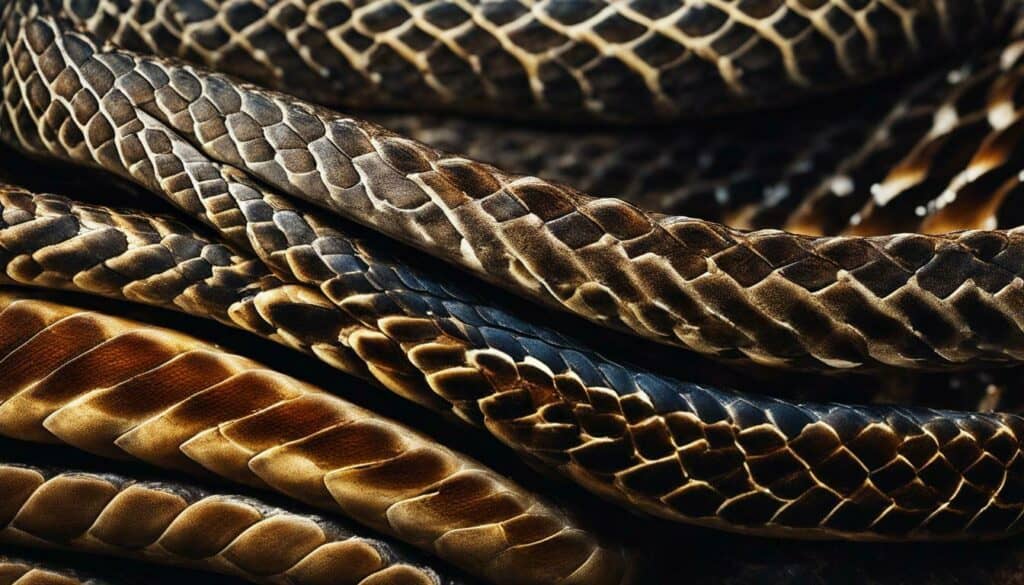
Despite this, scaleless snakes are not more vulnerable to dehydration than scaled snakes. In fact, they have ventral scales on their bellies that aid in efficient slithering and help retain moisture.
The vibrant colors and patterns on the skin of scaleless snakes are even more pronounced without the layer of transparent scales. Their beauty is truly unique and fascinating to reptile enthusiasts.
Scaleless snakes are capable of moving using various locomotion methods, including lateral undulation, concertina movement, sidewinding, and rectilinear locomotion. While snake scales serve to reduce friction and retain moisture, their absence in scaleless snakes does not hinder their ability to move.
The evolution of snake scales is complex and multifunctional. They serve to protect the body, aid in locomotion, provide camouflage, and assist in prey capture. Snake scales are made of keratin and come in various shapes and sizes. Some may be granular, smooth, or have a keel or ridge. In some snakes, like rattlesnakes, modified tail scales have developed into rattles used as warning signals.
It is important to note that the color of snake scales comes from pigments in the skin itself and not from the scales.
The Beauty and Vulnerability of Scaleless Snakes
The absence of scales does not diminish the beauty of scaleless snakes. In fact, the lack of scales can highlight the vibrant colors and intricate patterns on their skin. Without the interruptions of scales, the patterns can be more striking and clearly defined. This can make them even more appealing to reptile enthusiasts. Scaleless snakes are also intriguing because they challenge our understanding of snakes and their anatomy.
While many assume that scaleless snakes are more vulnerable to injury without their protective outer layer, studies suggest otherwise. Wild-caught scaleless snakes do not show any greater signs of scarring than their scaled counterparts from the same region. This suggests that scalelessness may not make them more vulnerable. However, it’s important to handle all snakes, including scaleless ones, with care and respect to avoid any injuries.
Interestingly, despite the lack of scales, scaleless snakes still shed their skin like scaled snakes. The shed skin is unique in texture, like a tubular piece of latex. This sheds the idea that snakes need scales to successfully shed their skin. Scaleless snakes have ventral scales on their bellies, which help them move and retain moisture. Therefore, they are not more prone to dehydration than scaled snakes, despite their lack of scales.
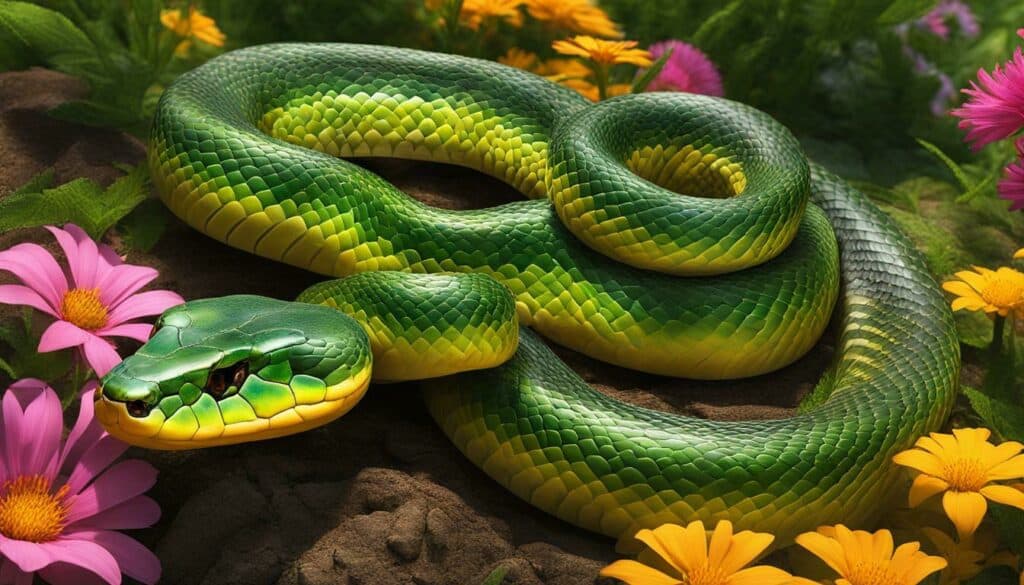
“The lack of scales can highlight the vibrant colors and intricate patterns on their skin, making them even more appealing to reptile enthusiasts.”
Conclusion
In summary, scaleless snakes are a fascinating mutation that has captured the interest of scientists and reptile enthusiasts alike. Their unique genetic makeup has made them stand out among other snake species, with their absence of scales being a striking characteristic.
It is important to note that scaleless snakes are not deformed; they have simply undergone a genetic mutation that has resulted in the lack of scales. This mutation can occur naturally or be selectively bred by breeders to create new and interesting snake morphs. Snakes such as the scaleless corn snake, Texas ratsnake, gopher snake, garter snake, and ball python have all been found to exhibit this trait.
Despite their stunning appearance, there is an ongoing debate about their vulnerability to injury due to their lack of protective scales. However, research has shown that their skin is thicker and tougher than that of scaled snakes, and they have a unique texture to their skin. Additionally, their vibrant colors and patterns on their skin make them highly sought after by collectors and enthusiasts.
Overall, the discovery of scaleless snakes has shed new light on the genetic diversity of snakes and the complex mechanisms that govern their development. They serve as a reminder that nature continues to surprise us with its wonders, and that there is much to be discovered about the animal kingdom.
Whether you are a seasoned reptile enthusiast or simply intrigued by the world of genetics, scaleless snakes are sure to captivate your imagination. So next time you come across one of these fascinating creatures, take a moment to marvel at their beauty and the genetic mutation that makes them so unique.
FAQ
Q: Are all snakes born with scales?
A: No, there are genetic mutations that result in the absence of scales in certain snake species.
Q: What is a scaleless snake?
A: A scaleless snake is a snake that lacks scales on its body, except for ventral scales on the belly.
Q: Can scaleless snakes pass down their scaleless trait?
A: Yes, if two scaleless snakes mate, they can produce offspring that carry the scaleless gene.
Q: Do scaleless snakes shed their skin?
A: Yes, scaleless snakes shed their skin in a similar manner to snakes with scales, leaving behind a smooth tubular piece.
Q: Are scaleless snakes more prone to dehydration?
A: Research suggests that scaleless snakes lose skin moisture at equal or lower rates than snakes with scales, indicating they have mechanisms to retain moisture.
Q: Are scaleless snakes more vulnerable to injury?
A: This is still a topic of debate, but precautions should be taken for captive scaleless snakes, such as avoiding live prey that may cause injury and providing a soft substrate and humid environment to prevent skin damage.
